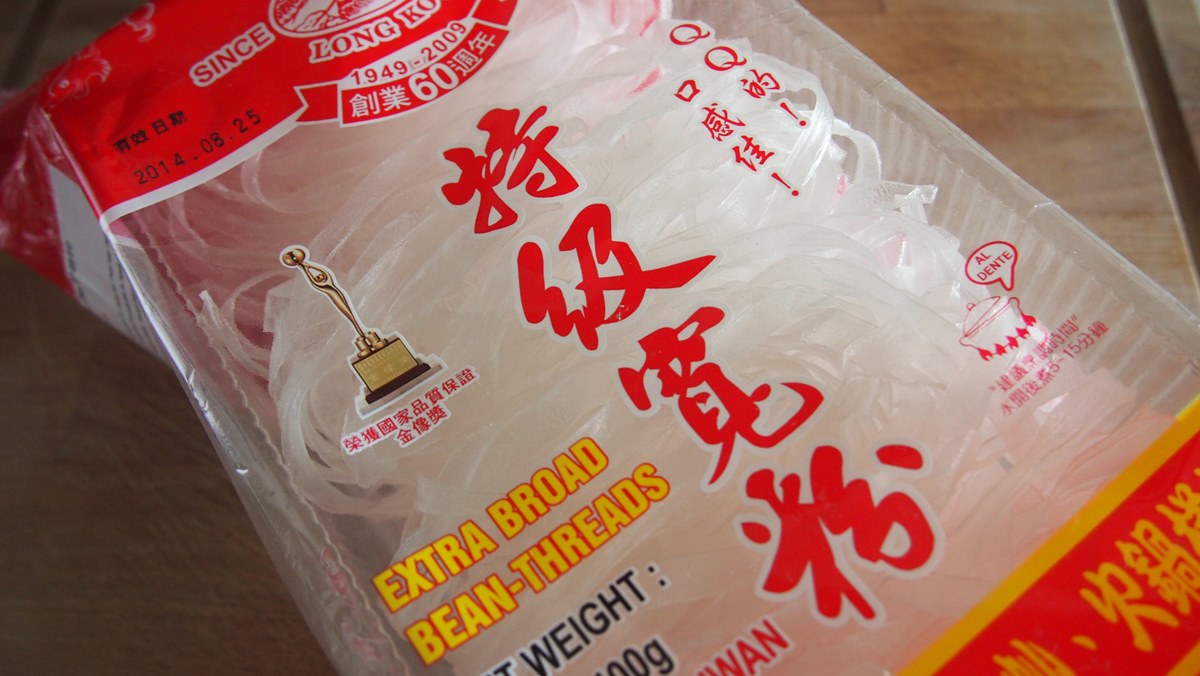- English: Cellophane noodles, Chinese vermicelli, Bean threads, Bean thread noodles, Crystal noodles, Glass noodles
- Mandarin Chinese: Fen Si 粉丝/粉絲
- Minnan Chinese (Hokkien): Dang Hoon 冬粉, Sio Hoon 細粉
- Cantonese Chinese: Sai Fan 細粉, Fan Si 粉絲
- Japanese: Harusame 春雨
- Korean: Dangmyeon 당면/ 唐麵, 호면/胡麵
- Vietnamese: bún tàu/bún tào, miến/miến dong
- Bahasa Indonesia: Sohun, Soun, Suun (from Hokkien)
- Bahasa Malaysia: Tanghoon (from Hokkien)
- Tagalog: Sotanghon (from Hokkien)
- Thai: Wun sen วุ้นเส้น
- Hawaiian: long rice
- Samoan: lialia
- German: Glasnudeln
- Dutch: Glasmie
- Spanish: Fideo celofán
- Swedish/Norwegian: Glasnudlar
Cellophane noodles are a staple in Confucian countries in Northeastern Asia: China, Japan and Korea. Through the Chinese diaspora in Southeast Asia and the Pacific, it has infiltrated the cuisines of Thailand, Vietnam, Malaysia, Indonesia, the Philippines and even Hawaii.
It is originally made of starch from mung (green) beans. But throughout the ages, variations occured and it can also be made with starch from tapioca, sweet potato, potato, yam etc. This does not make too much of a difference in taste, but it does determine the colour as well as how quick it dissolves in boiling water.

These noodles vary in shapes and sizes. The colour ranges from brown to white. You can get them completely broad and flat or very thin. It all depends on how you want to use them in your dish.
Cellophane noodles are almost always used in a soup, such as in a hotpot (Chinese huoguo 火锅, Japanese Shabu-shabu しゃぶしゃぶ), because it soaks up all the flavours of the sumptous broth. Otherwise, one can stir-fry it, such as the famous Korean Japchae 잡채 /杂菜 or Sichuan “Ants climbing up the tree” 蚂蚁上树.
Interested to find out how you can use glass noodles? Here are some recipes: Braised chicken with forest mushrooms 小鸡炖蘑菇, or Taiyuan-style Yangzage 山西太原羊杂割: A Mongolian dish fit for an Empress

